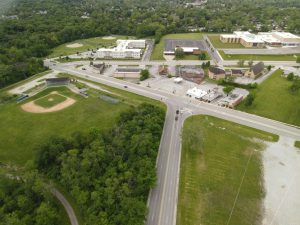Surprising Facts About Vehicle Safety Technology
When it comes to vehicle safety, technology has come a long way in recent years. From advanced driver assistance systems to innovative crash avoidance features, cars are now equipped with cutting-edge technology to keep drivers and passengers safe on the road. But there’s more to vehicle safety technology than meets the eye. In fact, there are some surprising facts that you may not be aware of. Let’s delve into some of the most interesting and unexpected facts about vehicle safety technology.
The First Car Crash Test Was Conducted in 1899
While we may think of car crash tests as a relatively recent phenomenon, the first car crash test actually took place over 120 years ago. In 1899, engineer and inventor Arthur James Leighton created the “Speed King” car and conducted a crash test with it. The car was driven into a brick wall at a speed of 18 miles per hour, and miraculously, both the driver and the car survived the collision. This groundbreaking experiment marked the beginning of efforts to improve vehicle safety through testing and regulation.
Seat Belts Were Invented in the 19th Century
It may come as a surprise, but the concept of seat belts has been around for much longer than most people think. In the mid-19th century, English engineer George Cayley invented an early version of the seat belt. However, it wasn’t until the 1950s that seat belts became a standard feature in cars. Today, seat belts are still one of the most effective safety features, reducing the risk of death by 45% and the risk of serious injury by 50% in a car accident.
Airbags Were Patented in 1953
While the first airbag was introduced in a production car in the 1970s, the concept of an airbag has been around for much longer. In 1953, American inventor John W. Hetrick was granted a patent for a “safety cushion assembly for automotive vehicles.” His invention used compressed air to fill a nylon bag in the event of a collision, cushioning the driver’s impact and reducing the risk of injury. Today, airbags are a standard safety feature in most cars and have saved countless lives.
Self-Driving Cars are Safer Than Human-Driven Cars
The idea of self-driving cars may still seem like something out of a sci-fi movie, but the technology already exists and has been tested extensively. In fact, studies have shown that self-driving cars are much safer than human-driven cars. Self-driving car technology is designed to eliminate human errors, which are responsible for 94% of car accidents. With advanced sensors, cameras, and artificial intelligence, self-driving cars have the potential to significantly reduce the number of car accidents and save lives on the road.
The First Rearview Mirror Was a Woman’s Idea
Many people may not realize that the rearview mirror, a crucial safety feature in cars, was invented by a woman. In 1916, New York City resident Charlotte Bridgwood received a patent for a “rear-seeing mirror” that she created to help drivers see behind them. At the time, rearview mirrors were not yet a standard feature in cars, and Bridgwood’s invention became an important safety tool for drivers. Today, it is hard to imagine driving without a rearview mirror.
Advanced Driver Assistance Systems are Becoming Standard
Advanced driver assistance systems, or ADAS, are technologies that assist and support drivers in various ways, such as maintaining a safe speed, staying in the correct lane, and detecting potential hazards. While these features were once only available in luxury cars, they are now becoming more common in mainstream vehicles. In fact, many car manufacturers have committed to making ADAS standard in all their new models by 2022, demonstrating the growing importance and effectiveness of this technology in ensuring vehicle safety.
Blind Spot Detection Technology Can Prevent Accidents
Blind spots are a significant concern for drivers and can often lead to accidents. But with the emergence of blind spot detection technology, this risk can be significantly reduced. By using sensors and cameras to detect vehicles in a car’s blind spot, this technology can alert drivers through a visual or audible warning if they attempt to change lanes when another vehicle is too close. Studies have shown that cars equipped with this technology have 14% fewer lane change accidents.
Conclusion
In the past few decades, vehicle safety technology has advanced at a rapid pace, and its impact on improving road safety cannot be overstated. From the first car crash test to the invention of advanced driver assistance systems, these innovations have played a crucial role in preventing accidents and saving lives. As technology continues to evolve, we can expect even more exciting and surprising advancements in vehicle safety to come.










